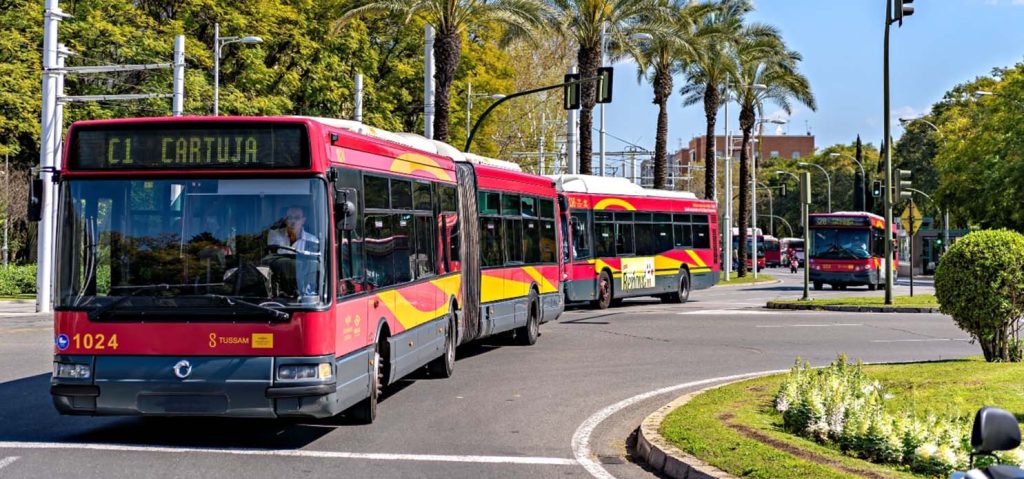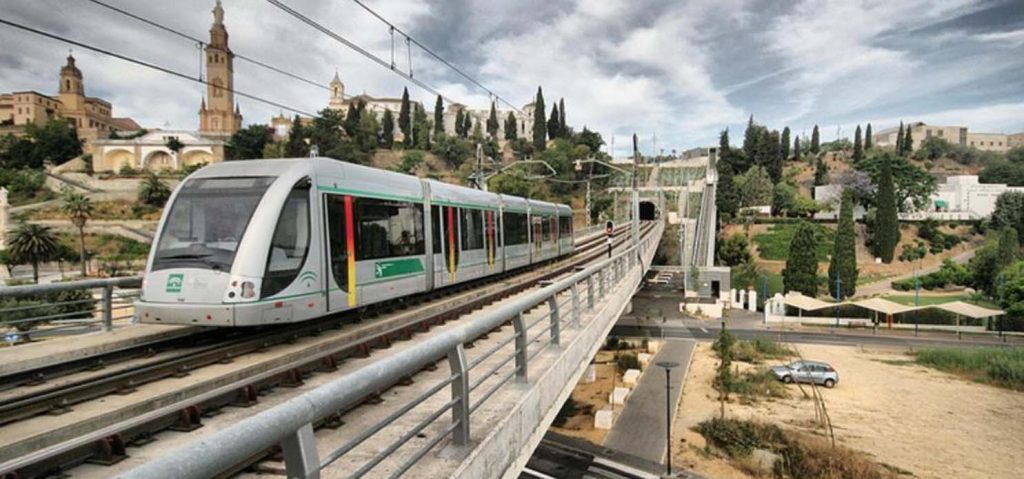Seville, the vibrant capital of Spain’s Andalusia region, is a city rich in history, culture, and beauty. Whether you’re exploring its grand landmarks, like the Alcázar or Seville Cathedral, or soaking in its lively atmosphere through its winding streets, understanding how to get around the city is essential. While Seville is walkable and often best enjoyed on foot, the city boasts a comprehensive and affordable public transportation system that makes traveling around even more convenient for tourists.
In this guide, I’ll share everything you need to know about Seville’s public transport options — from buses and trams to bikes and taxis — so you can make the most of your time in this beautiful city.
1. Seville’s Public Transport System
Seville’s public transport is managed by TUSSAM (Transportes Urbanos de Sevilla Sociedad Anónima Municipal). This system includes buses, trams, and a metro line that connects various parts of the city and its suburbs. Additionally, Seville has an excellent bike-sharing program and affordable taxis, making it easier for tourists to get around.
Why Use Public Transport in Seville?
- Affordability: Tickets are reasonably priced, with options for single rides or day passes, making it economical for travelers.
- Efficiency: Public transport is reliable and covers most major tourist destinations.
- Eco-Friendly: Seville’s public transport is geared towards reducing pollution, with an emphasis on sustainable modes of travel.
2. TUSSAM Bus Network
Routes and Coverage
The TUSSAM bus network is extensive, covering the city center as well as the suburbs. The main bus lines run through central areas and make stops at key tourist attractions like Plaza de España, the Cathedral, and the Torre del Oro. There are more than 50 different bus routes available.

How to Use the Bus
- Ticket Purchase: Tickets can be purchased from bus drivers, at TUSSAM kiosks, or through a contactless Tarjeta Multiviaje card, which is rechargeable and offers a discount for frequent users.
- Cost: A single ticket costs around €1.40, while a day pass for unlimited travel costs €5.00.
- Frequency: Buses are frequent, with intervals between 5 and 15 minutes depending on the time of day and the line.
- Tourist Tip: The C5 Circular Line is especially useful for visitors, as it loops through the city center, making it convenient to hop on and off near major attractions.
Night Buses
Seville’s night buses, known as Buhos, operate from midnight to 2 AM and cover key routes for those out exploring the nightlife. Be sure to check the specific route timings as they differ from the regular bus schedule.
3. Seville Tram (MetroCentro)
The MetroCentro Tram is another convenient way to travel within the city center. The tram currently operates on a 4.2 km route, with five stops that connect important areas such as the historic center, Plaza Nueva, and the San Bernardo interchange.
Why Take the Tram?
- Quick and Scenic: The tram is a great option for tourists who want to avoid walking long distances between the main sights.
- Accessible: The tram is fully wheelchair accessible, and stops are clearly marked in English and Spanish.
- Cost: Similar to the bus system, a single tram ride costs around €1.40. The same Tarjeta Multiviaje card can be used for both buses and trams.
Future Expansions
Seville’s tram network is set to expand in the coming years, with plans to extend the line further into the city to provide greater access to the neighborhoods on the outskirts.
4. Seville Metro
While Seville’s metro system is not as extensive as those in larger cities, it offers an efficient way to get from the outskirts to the center quickly.

Metro Line 1
Currently, Metro Line 1 is the only operational line, running from Ciudad Expo in the west to Olivar de Quintos in the southeast, passing through the city center. It’s an excellent option for travelers staying in suburban areas who want a fast, direct way into Seville.
Tickets and Costs
- Single Ticket: Prices vary based on the number of zones traveled, ranging from €1.35 to €2.80.
- Travel Cards: A Tussam travel card can be used across both metro and bus services for discounted fares.
- Schedule: The metro operates from 6:30 AM to 11 PM on weekdays, with extended hours on weekends and holidays.
5. Cycling Around Seville: Sevici Bike Share
Seville is one of Europe’s most cycle-friendly cities, with over 160 km of bike lanes. The city’s Sevici bike-sharing system is an excellent option for tourists who want to explore on two wheels.
How to Use Sevici
- Register: You can sign up for a short-term or long-term subscription. A short-term subscription (7 days) costs around €13.33, with the first 30 minutes of each ride free, and a small charge thereafter.
- Pick Up and Drop Off: Sevici bikes can be picked up and dropped off at any of the 260 stations throughout the city, which are located near major attractions and transport hubs.
- Best Routes: Popular cycling routes include the River Walk along the Guadalquivir, where you can enjoy stunning views of Seville’s skyline and stop at iconic landmarks like the Torre del Oro.
6. Taxis and Ride-Sharing
Taxis are widely available in Seville and are an efficient option for late-night transport or when public transport is limited.

Taxi Services
- Official Taxis: Seville’s official taxis are white with a yellow stripe. They can be hailed on the street, picked up at taxi ranks, or booked via phone.
- Rates: Fares start at around €3.50 and increase based on distance. Night rates apply after 10 PM and on Sundays or holidays.
- Ride-Sharing: Apps like Uber and Cabify are also available in Seville, offering a more modern alternative to traditional taxis. Prices can be competitive, and ride-sharing is ideal for those who prefer cashless transactions and app-based bookings.
7. Navigating from Seville’s Airport (San Pablo Airport)
Most international travelers will arrive at San Pablo Airport, which is about 10 km from Seville’s city center.
Getting to the City
- Airport Bus (EA Line): The EA bus line (Especial Aeropuerto) runs directly from the airport to Seville’s central bus station (Plaza de Armas), with stops at key locations like Santa Justa Train Station and Avenida Carlos V. A ticket costs around €4.00 one way.
- Taxis: Taxi rides from the airport to the city center typically cost between €20-€25.
- Car Rentals: If you plan on exploring more of Andalusia, renting a car at the airport is a convenient option. Major rental companies have desks at the airport.
8. Tickets and Passes for Public Transport
Types of Tickets
- Single Ride Tickets: These are valid for one journey on either the bus, tram, or metro and cost around €1.40.
- TUSSAM Travel Cards: The Tarjeta Multiviaje is a prepaid card that can be used across the TUSSAM network, offering discounted fares.
- Tourist Passes: For visitors planning to use public transport frequently, there are tourist passes available for 1, 3, or 7 days of unlimited travel.
Where to Buy Tickets
- Bus Drivers: You can buy a single ticket directly from bus drivers.
- Kiosks: Many TUSSAM stations have kiosks where you can buy tickets or top-up travel cards.
- Online: Tickets and travel passes can also be purchased online through the official TUSSAM app.
9. Final Tips for Navigating Seville
- Use Apps: The TUSSAM app offers real-time updates on bus and tram schedules, helping you plan your journey.
- Avoid Rush Hours: Buses and trams can get crowded during peak hours (8 AM to 9 AM and 6 PM to 7 PM), so plan accordingly.
- Walking: If you prefer to walk, many of Seville’s key attractions are within a short distance of each other.
Getting around Seville is a breeze thanks to its affordable, efficient, and sustainable public transport options. Whether you’re hopping on a tram to explore the historic center or cycling along the riverbanks, navigating the city is easy and enjoyable.